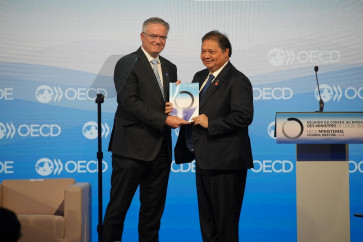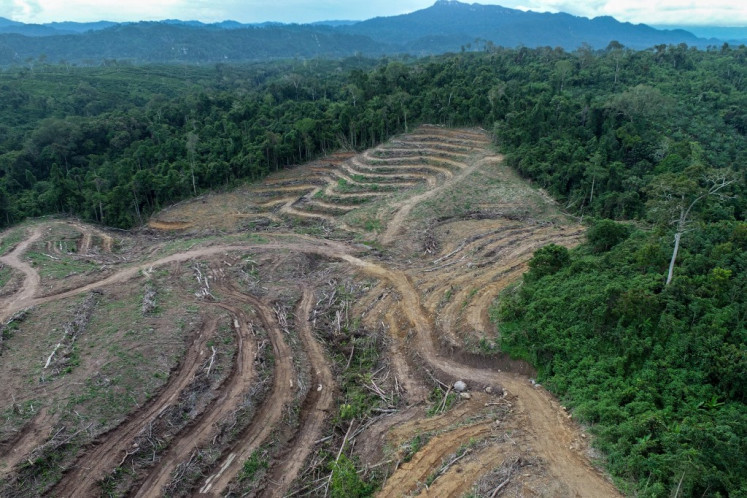Popular Reads
Top Results
Can't find what you're looking for?
View all search resultsPopular Reads
Top Results
Can't find what you're looking for?
View all search resultsE. Java virus strain similar to those in China, Europe
Airlangga University’s Institute of Tropical Diseases (ITD-UNAIR) in Surabaya, East Java, has completed six whole genome sequencing analyses of genetic data from SARS-CoV-2, in which four strains were found to be similar to the Chinese strain and two similar to the European strain
Change text size
Gift Premium Articles
to Anyone
A
irlangga University’s Institute of Tropical Diseases (ITD-UNAIR) in Surabaya, East Java, has completed six whole genome sequencing analyses of genetic data from SARS-CoV-2, in which four strains were found to be similar to the Chinese strain and two similar to the European strain.
ITD-UNAIR director Maria Ingelusida said data from two whole virus genome sequences had been sent to Global Initiative on Sharing All Influenza Data (GISAID), while the four others were in the finishing phase at the lab.
“Four isolated sequences of the virus we’ve analyzed are closer to the Chinese clade and two are closer to the European clade,” Maria told The Jakarta Post on Wednesday.
She said the six whole virus genome sequences might reveal the origin of SARS-CoV-2 in East Java. Data from three whole genome sequences submitted earlier by the Eijkman Institute for Molecular Biology to GISAID were all similar to the Chinese clade, she added.
“So, ours provide new findings in terms of the virus origin, that the virus transmission source here is also from Europe, not only China,” she said, adding that the whole genome sequence data could also determine the virus transmission path.
Maria said SARS-CoV-2 was a ribonucleic acid (RNA) virus that easily mutated. Therefore, she said, the SARS-CoV-2 whole genome sequences from Indonesia would certainly have some genetic peculiarities although they were closer to either the Chinese branch or the European branch.
She said that so far, there were three clades of SARS-CoV-2, namely type A (found in bats), type B of the Chinese strain, and type C of the European strain.
The complete six isolated SARS-CoV-2 sequences were among 20 samples taken from COVID-19 patients in Surabaya and several other cities in East Java, she said.
Maria said SARS-CoV-2 whole genome sequence data provided virologists and molecular biologists with valuable information on important changes to antigens as well as valuable information for vaccine development.
“This data is very important because genes will code proteins that are produced by the virus. Information on the proteins is needed in vaccine development, for instance,” she said.
She said ITD-UNAIR would continue its whole genome sequencing project with more samples to be analyzed.
Earlier this month, the government said that the coronavirus strain that has swept across Indonesia was different from at least three other known SARS-CoV-2 strains affecting the rest of the world. The conclusion was based on an analysis of data from three complete genome sequences of the coronavirus in the archipelago earlier submitted by the Eijkman Institute to GISAID.
GISAID, an initiative that promotes the sharing of genetic data on influenza viruses and coronaviruses, has been collecting data on the various strains of the coronavirus that causes COVID-19 from a number of countries.
The research has so far found at least three different strains of the coronavirus, identified as types S, G and V.
“Strains other than those three types are yet to be identified. The samples sent from Indonesia are among the unidentified ones,” Research and Technology Minister Bambang Brodjonegoro said during a meeting with the House of Representatives on May 5.
The new information contained in the complete genome sequences is expected to help scientists understand the mutations of the virus strains and aid the development of a vaccine, Bambang said.
The Eijkman Institute submitted on May 4 its first three complete genome sequences of the Indonesian strain to GISAID. This was the first submission from Indonesia, although the Health Ministry’s lab announced that it was also sequencing the virus early in the outbreak.










